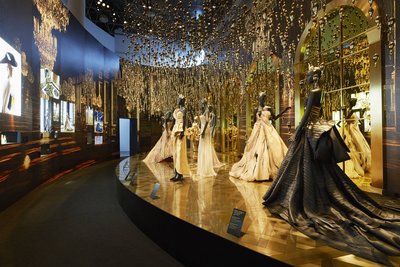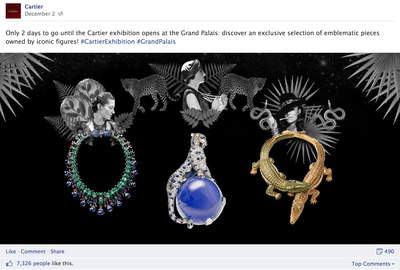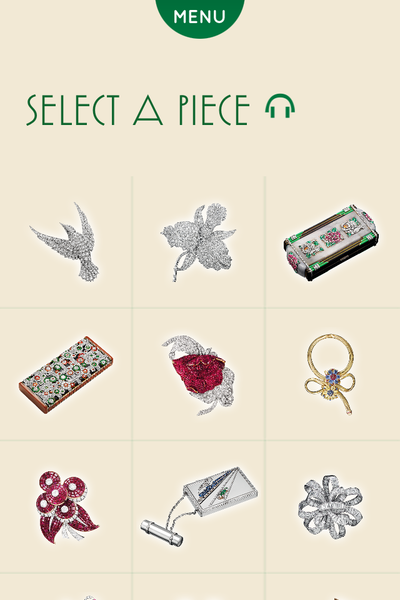
From collaborative art installations to displaying iconic pieces of jewelry, nearly every brand has curated a museum exhibit to showcase their heritage and identity from their own perspective.
By curating an exhibit a brand can bolster its identity through storytelling that reveals specific aspects of its history to consumers. Using education and creative exhibit installations may help reaffirm its position in the luxury market and elevate its standing in the mind of enthusiasts.
“At best, an exhibit can help attract more users among the same segment,” Rob Frankel, branding expert at marketing consultancy firm Frankel & Anderson, Los Angeles.
“The theory there is that the brand parallels the same audience characteristics as would be attracted to the exhibit,” he said.
“In this way, the exhibit is nothing more than an advertising medium, just like a TV show that attracts female teens or women over 40."
Museum moments
Every brand has a specific story to tell its target consumers. These stories are embraced by enthusiasts and garner respect among new fans by highlighting the brand’s innovations, craftsmanship and history.
Also, organizing a traveling or temporary museum exhibit can help introduce the brand to a new market place that may be unfamiliar with the brand.
For example, French label Christian Dior partnered with the Museum of Contemporary Art in Shanghai, China, in an exhibit titled “Esprit Dior” to display brand history in relation to art, fashion, society and culture.
The Esprit Dior exhibit ran Sept.13 through Nov. 10 and explored the haute couture fashions created by Dior throughout its history alongside contemporary works of art by Chinese artists (see story).
Dior's Shanghai exhibit
Product-centric exhibits can magnify a particular facet of a brand. Choosing a well-known, but entry-level product, for an exhibit’s focal point may pique the interest of young, aspirational consumers as well.
Dior used this strategy to to further align its women’s fragrance Miss Dior with international artists during a two-week exhibition at the Grand Palais in Paris.
For the first time in the fragrance’s history it was the focus of a large-scale exhibition at the Galerie Courbe du Grand Palais in Paris from Nov.13-25. The exhibit explored Mr. Dior’s inspirations for his debut fragrance through the work of 15 international female artists who were given “carte blanche” to explore Miss Dior’s scent, bottle silhouette, its muses and history (see story).
Promotional image for the Miss Dior exhibit at the Grand Palais, Paris
Furthermore, a brand should also be able to stand alone and attract an audience without collaborating with outside parties.
“My thesis is that the relationship should be exactly the opposite: A brand with a true, strong brand strategy should be the object of the artists'/exhibitors' desire,” Mr. Frankel said.
"Instead of the brand rubbing up against borrowed interest, the borrowed interest should be looking for a boost from the brand.”
Heritage highlights
Including groundbreaking pieces works in a similar way by appealing to historians and consumers interested in the glamorous lifestyles of royalty and celebrities.
For instance, France’s Cartier is honoring its heritage with an exhibit inside the Grand Palais in Paris that allows visitors to explore the jeweler’s role in the history of fine jewelry as art.
From Dec. 4 through Feb. 16 visitors to the “Cartier. Le Style et L’Histoire” exhibit can view more than 600 pieces that represent Cartier’s legacy from its founding in 1847 through the mid-1970s. Pieces on view are meant to serve as a “testament to the rich and intricate history of the Jeweler to the Kings and the King of Jewelers,” per a brand statement.
Facebook promotion for the Cartier. Le Style et L'Histoire exhibit
In addition to jewelry, accessories and watches, an array of more than 300 complementing documents such as notebooks, plaster casts and photographs will be on display to give visitors insight into Cartier’s creative process. The addition of these artifacts helps enthusiasts better understand the brand while highlight Cartier’s accomplishments for unfamiliar attendees (see story).
With digital technology infiltrating nearly every aspect of daily life, a branded museum exhibit should be no different and can benefit greatly from available touch points.
For example, French jeweler Van Cleef & Arpels enhanced the physical experience of its museum exhibit ,“A Quest for Beauty: The Art of Van Cleef & Arpels,” Oct. 27 through Feb. 15 at the Bowers Museum in Santa Ana, CA, with a mobile audio application.
Van Cleef & Aprels' app
Van Cleef & Arpels’ “A Quest for Beauty” mobile app, unlike traditional museum plaques, acts as a curated tour that is designed to guide enthusiasts through the exhibit (see story).
Stretching too thin
Although commissioned artists can help an exhibit's scope, such a display can lose focus of brand identity.
Furthermore, brands are able to highlight their devotion to craft and innovation by borrowing an artist’s aesthetic, but such maneuvers can have the unintentional consequence of downplaying the quality of that brand’s own hard-earned aesthetic. Also, commercialization of venerated artists may jeopardize the aura of ultra-exclusivity that has driven art sales at both auctions and fairs to all-time highs (see story).
“In fact, any borrowed interest actually detracts from the brand because it distracts the prospects from the brand itself,” Mr. Frankel said.
“People pay more attention to celebrities or events than they do to the brand itself, which means the brand is handcuffed to those celebrities' murder trials and prison sentences, as well - not good for the brand,” he said.
Final Take
Jen King, editorial assistant on Luxury Daily, New York




